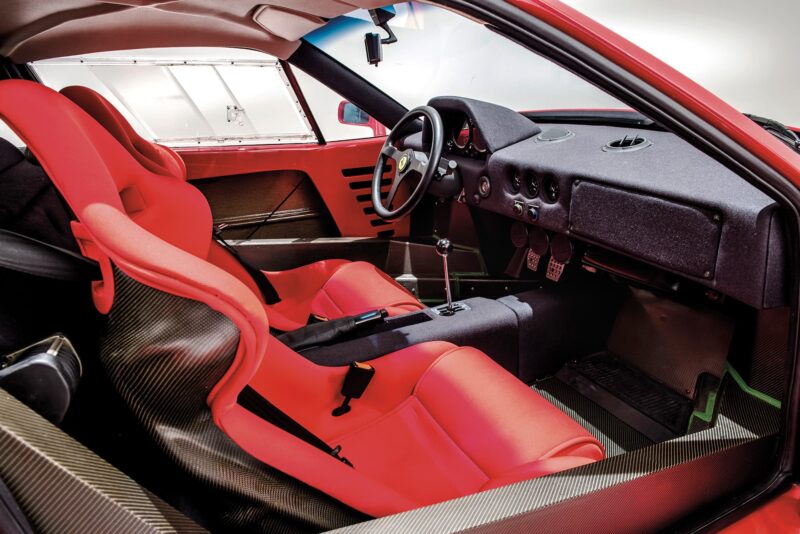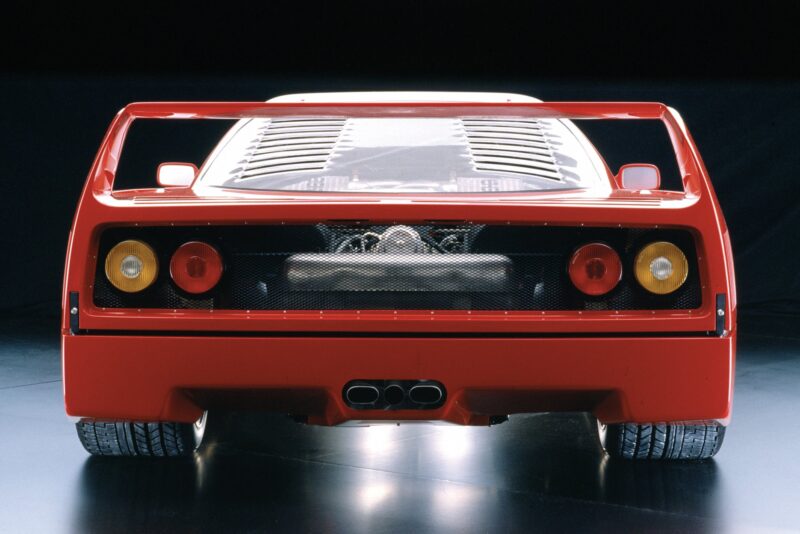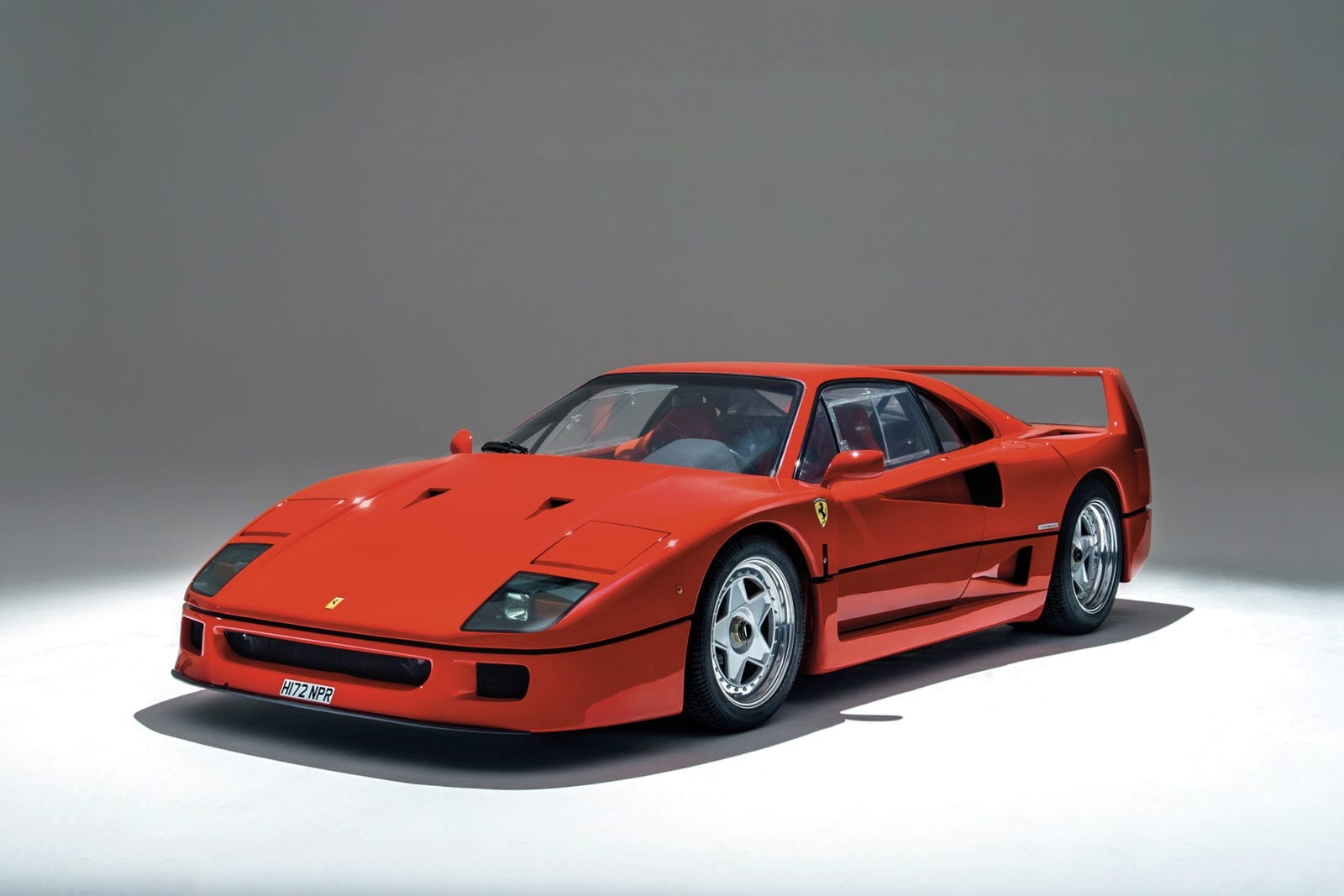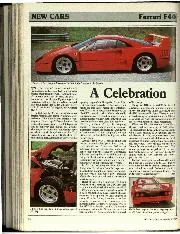As you’d expect from a track-focused design, the F40 had racing origins. Back in 1984 Ferrari began developing the 288 GTO, essentially a homologation special of the 308 GTB, designed for Ferrari’s return to GT racing.
By 1987, the 288 had sprouted wider, more streamlined bodywork, a huge rear wing and earned the tag Evoluzione. Only six were built, intended to compete under the Group B regulations for sports cars at Le Mans to rival Porsche’s 959. Except Group B was banned for good in both racing and rallying at the end of 1986, meaning none of the cars ever turned a wheel in competition. Ferrari was left with essentially useless cars. Except, they weren’t.
With his health failing, Mr Ferrari vowed to create a memorable final car under his gaze. He set the engineers who had collaborated on the Evoluzione programme to use its base to develop a road car, which would also celebrate Ferrari’s 40th anniversary.
“The F40 was the fastest, most radical, and most expensive car in the world”
The F40 used many of the styling cues visible on the Evoluzione, largely due to sharing its designer, Nicola Materazzi, who worked with Pininfarina to refine the design.
At its heart, the F40 ran a tweaked version of the 3-litre twin-turbo V8 from the Evoluzione. The car was extremely light at 1100kg, with no carpets, with visible chassis sealant and paint so thin you could still see the weave of the carbon/kevlar bodywork. At the time, the F40 was the fastest, most radical, and most expensive (circa £250,000 at launch) car in the world.

Exposed carbon was par for the course
The double wishbone suspension kept the car low, too low in some cases, forcing Ferrari to introduce adjustable ride height to allow an F40 to negotiate speedbumps safely.
Not that it mattered. With Enzo deteriorating, speculators flooded the early order books expecting prices to soar upon news of his death, which they did in 1988 when ‘The Old Man’ did succumb at the age of 90. The F40’s collectors’ item status was confirmed when Ferrari estimated that just 10 per cent of the cars delivered within the model’s first three years were actually used for driving. Although only 400 units were planned, Ferrari made 1315 in total between the period of 1987-92.

V8 engine helped power the F40 to 201mph
The F40 brought Ferrari back to motor sport through some special LM editions that competed from 1989, mainly in IMSA and at Le Mans, although the model also became a regular in the BPR GT Series, until it was finally phased out when McLaren’s new F1 forced a rethink from 1995.
Whether used as a racing car, a museum piece, or even in the rare event of actually being driven, the F40 is a perfectly flawed, shining piece of Ferrari’s history.


